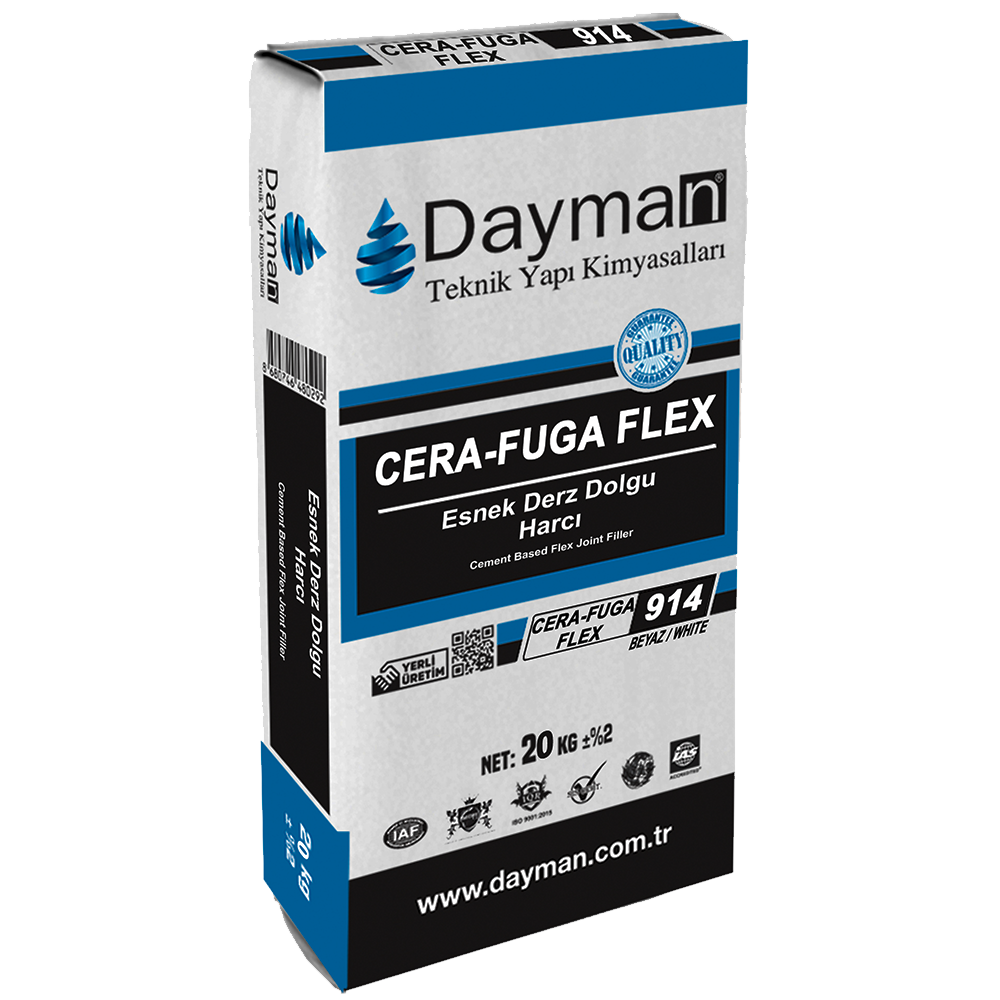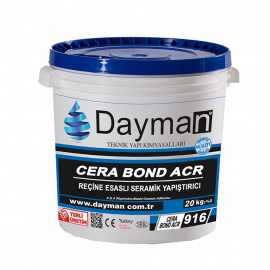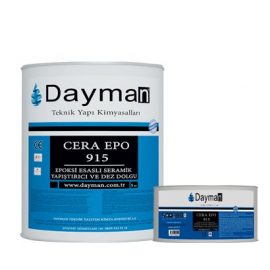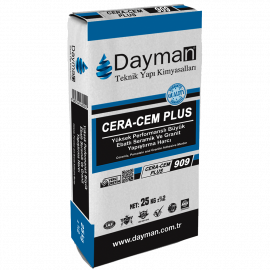CERA-FUGA FLEX – 914
It is a cement based, single component, polymer added, flexible, abrasion resistant
product
Description
It is a cement based, single component,
polymer added, flexible, abrasion resistant
product which used in 1-6 mm joint gaps.
Category CERAMIC ADHESIVE AND JOINT FILLERS
- Related Products
- Usage Areas
- Technical Specifications
- Method of Application
- Additional Information
- Technical Leaflet
- Videos
DESCRIPTION:
It is a cement based, single component,
polymer added, flexible, abrasion resistant
product which used in 1-6 mm joint gaps.
ADVANTAGES:
Available use for outdoor.
Available use for swimming pools,
Easy and fast preparation.
Silicone additive.
Abrasion strength.
Used in glazed surface without any
damage.
Excellent adherence.
Resistant to freezing and thawing cycles.
It can be used safely in large size ceramics.
Available use for 1-6 mm joint fill.
USAGE AREAS:
Available use for ceramic, tile, glass mosaic,
marble and etc.
Indoor Applications:
Bath, WC, kitchen, wet areas.
Floor.
Wall.
Outdoor Applications:
Balcony and Terrace.
Exterior Walls.
( 23 °C Temparature and 50 % for relative
humidity)
Aderance : ≥ 1,0 N/mm²
Compressive Strenght : ≥ 15,00 N/mm²
Bending Strenght : ≥ 2,50 N/mm²
Heating Resistance : (-20°C) – (+80°C)
Pot Life : 1 hour
Working Time : 1 hour
Opening for use : 24 hours
Abrasion Resistan : 1000 mm³
***These values were obtained as a result
of laboratory tests, just contain finished
applications according to drying time
performance. Due to differences in
temperature and humidity values in the
construction site, the values may change.
Surface Preparation:
Adhesive should set before the joint filler
application,
Joint gaps, free from dirt and debris that
prevent adhesion,
The inter-joint depth should not be less than
2/3 of the ceramic thickness.
If high absorbency coating materials are
used in hot and windy weather for the
application, the joints should be moistened
with clean water.
Preparation Of The Mixture:
6, 5 liters water is poured into an empty and
clean bucket.
Pour slowly 20 kg powder into the water
bucket and use 400 rpm mixer until
eliminate chunks of the powders.
Rest 5-7 minutes to have the mortar.
Before starting the application mix 30
second again.
Application:
CERA-FUGA FLEX – 914 joint trowel is
applied to the surface with hard rubber
tipped mop.
All joints should be filled without gaps during
the application, should be applied with
cross-circular movements, all gaps should
be filled.
In order to avoid collapse and cracking in
deep joints, should be done 2-step
application.
Excess materials should be peeled off the
surface in the same way.
When the joint filled material loses its water
and becomes dull, the joints are wetted
again with wet sponge.
The remaining products are cleaned with a
sponge. The sponge should be cleaned
frequently.
After the joint sealant has reached sufficient
hardness, it should be cleaned with a dry
cloth.
Water can be sprinkled on the application to
improve performance in very hot weather.
Temperature should be between +5 °C and
+35 °C during the application.
Do not apply on surfaces that are at risk of
frost.
In addition, it should not be applied in
extremely hot, rainy or windy weather.
These conditions can make shorter the
working time.
The expired or crusted mortar in the bucket
should not be used and should be disposed
of.
Wash the hands and used instruments with
plenty of the water after the application.
The surface that remained adhesive should
be cleaned by wet rag.
It should prevent from direct water contact
and pedestrian traffic in 24 hours.
CLEANING OF INSTRUMENTS:
DAYMAN CERA FUGA FLEX–914should
be cleaned by water when it wet.
DAYMAN CERA FUGA FLEX –914 after
become dry should be cleaned by the
mechanical ways.
CONSUME:
Various, please check joint consume
schedule.
PACKING:
25, 00 kg. craft bag
80×120 pallet dimension
Qty on pallet 60
COLOR:
Various
SHELF LIFE:
1 year from the production date under
proper storage conditions.
SAFETY RECOMMENDATIONS:
Wear work clothes, protective gloves,
glasses and masks should be used during
application.
As it cement based, do not breath and do
not touch with skin and eyes,
Due to the irritating effects of the cured
materials, skin and eyes should not be
contacted, in case of contact with wash
plenty of water and soap, if swallowed seek
medical attention immediately.
Food and beverage materials should not be
kept in the application area and should not
be eaten.
Store out of reach of children.
This product packaging must be disposed of
in accordance with applicable laws.
This responsibility is belong the end user.
For more information please check the
Material Safety Data Sheet.
LIMITATIONS OF LIABILITY:
The information in this technical data sheet
is given according to technical information,
experience and test result.
As GENERALTÜRK A.Ş. cannot control the
usage of the product that used under which
kind of conditions, it does not accept any
responsibility for the application result and
does not guarantee it.
The product suitability for the product user
should be tested and decided accordingly.
All products should be considered in the
advice of those technical knowledge and
equipment.
GENERAL TURK A.Ş can not accept any
resposibility that occures because of missuse,it only responsible for the written
suggestions that shows the products where
and how use.
GENERALTÜRK A.Ş. It may change the
properties of its products without
announcement.
The technical data sheet is valid until the
next time it is printed and all previous
technical data sheets invalidate the
description.
PRODUCTS
- BITUMEN BASED WATERPROOFING PRODUCTS
- MINERAL BASED WATERPROOFING PRODUCTS
- RESIN BASED WATERPROOFING PRODUCTS
- POLYUREA BASED WATERPROOFING PRODUCTS
- REPAIR MORTAR
- CEMENT BASED FLOORING PRODUCTS
- EPOXY BASED FLOORING PRODUCTS
- CERAMIC ADHESIVE AND JOINT FILLERS
- MORTAR ADDICTIVES
- THERMAL INSULATION SYSTEMS
- AUXILIARY PRODUCTS
- MASTICS
- SPECIAL PAINTS
- PRIMERS
- ANCHORING PRODUCTS
- INJECTION PRODUCTS
- ACCESSORIES AND APPLICATION PRODUCTS




